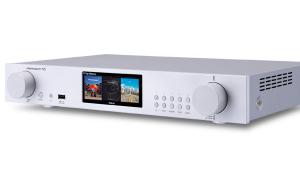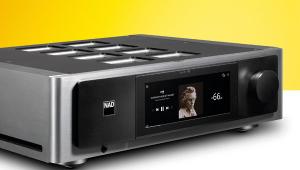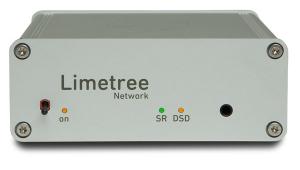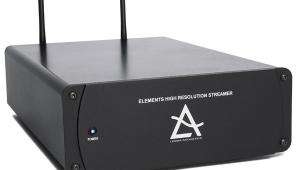Auralic Aries G2.1
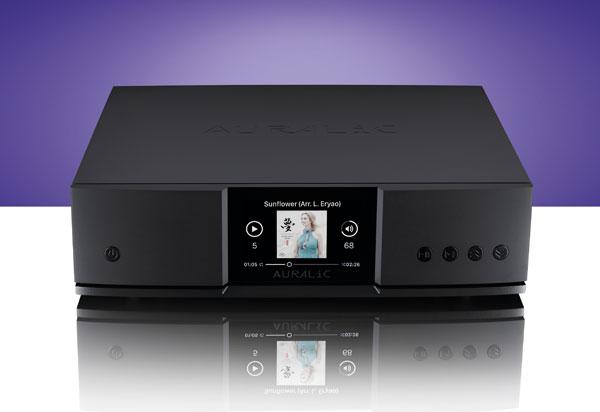
 It’s become clear over the past few years, that it’s possible to have network-streamed audio in just about any kind of device. From wireless multi-room speakers to inexpensive DIY computers and from high-end players to all-in-one systems, however you want to access music stored in a home library or stream from an online service, it can be done. And it’s not hard to see why: at its very simplest, a manufacturer can buy a complete off-the-shelf streaming solution and simply plug that into anything it chooses to design.
It’s become clear over the past few years, that it’s possible to have network-streamed audio in just about any kind of device. From wireless multi-room speakers to inexpensive DIY computers and from high-end players to all-in-one systems, however you want to access music stored in a home library or stream from an online service, it can be done. And it’s not hard to see why: at its very simplest, a manufacturer can buy a complete off-the-shelf streaming solution and simply plug that into anything it chooses to design.
From that has sprung one of the great myths of network audio, ranking alongside ‘bits is bits’ and ‘all properly designed amplifiers/DACs/CD players will sound the same’: it suggests that there’s no point in spending more than the absolute minimum on network streaming hardware, because the budget options are so good that it’s all but impossible to make even marginal improvements by extending the expenditure. After all, the logic goes, a network player is basically a computer, and buying a better one won’t turn a dunce into a genius...
Many manufacturers tend to challenge these assumptions, given the wide range of streaming hardware out there – and prominent among these is Auralic, which has what may at first glance look like a dizzying array of network and digital hardware. And the Beijing-based company continues to refine its art, as evidenced by its ‘.1’ range, of which the Aries G2.1 is a keystone.
Described as a “Wireless Streaming Transporter”, the Aries G2.1 is designed to sit at the heart of a complex digital music system, being able to play music from local storage, over a network or on a connected USB store or online streaming services. But it goes further than that: for a £400 premium over the £4,200 price-tag, it can be supplied complete with 2TB of internal storage, enabling it either to play music stored within or serve that content to external devices. And thanks to the new Lightning OS7.0 on which the unit runs, you can also use it as a CD ripper: connect a USB CD drive and copy the contents of your discs to its internal library, with a multi-read/memory system to ensure an accurate rip. What’s more, you can use the drive to listen to a CD while ripping, or simply play the disc in a conventional manner.
It’s all under the control of Auralic’s Lightning DS app, which will ‘drive’ the Aries G2.1, allowing the user to access external storage – in my case, a hefty music library stored on a pair of QNAP servers running around 40TB apiece, and acting as backup to each other (which probably explains why it takes a good while to index the whole network share – or sign up to services including Qobuz and Tidal).
In addition to working with existing UPnP software, such as the Asset UPnP running on my servers, it’s also possible to use Auralic’s Lightning Server software to scan your music content and serve it – you just point it at the folder where the music is served, and let it scan (which takes an awful lot longer, but then we are talking about a library of just over 300,000 tracks). This opens up an intriguing possibility when multiple Auralic units are used on the same network, the processing power here allowing hi-res files all the way up to multi-DSD to be streamed wirelessly, going entirely against my instinct that for the best stability – especially when streaming ‘hi-res’ – a wired network connection is best.
The Lightning Server also gives the user a wider range of options for accessing music, including the ability to see by date the most recent additions to the library or – if you’re an audio trainspotter – choose what you listen to according to file format. Does anyone really do that?
And being a ‘transporter’, the Aries G2.1 will need to be used with a DAC, or feed another network device, in order for music to be heard: there are no analogue outputs here, but rather a choice of digital formats including conventional optical and electrical digital – the latter with both coaxial and balanced AES/EBU connections – and a galvanically isolated USB for a compatible DAC. In addition, there’s Auralic’s Lightning Link connection, to feed other devices from the company. This is on an HDMI-style connector, but it’s not to the HDMI standard, and neither does it use the I2S format some other manufacturers provide on such a connector. Instead it’s an entirely proprietary data-transfer system, for which a cable is provided in the box, and is carried over from the previous G2/GX generation, meaning old and new components can be interchanged.
The Aries G2.1 has a sharper industrial design, shared with the other 2.1 models: the Vega G2.1 streaming DAC (£6,000), Leo GX.1 reference master clock (£8,000) and £6,000 Sirius G2.1 upsampling processor. The look is certainly stylish, although I have to admit I have a few fumbles when navigating the initial setup menu, thanks to the array of four black-on-black control buttons to the right of the display, the functions of which require a little refamiliarisation and the truly tiny typography on the display panel, which means more reference than usual to the instruction manual.
But this isn’t just a slick re-skin: much has also changed within, too. Though compact, the Aries G2.1 feels solidly put together, but that’s only half the story: within the heavyweight aluminium casework is a ‘chassis within a chassis’ made from copper, to further protect the circuitry from external interference, The whole thing, called ‘Unity Chassis II’, is mounted on a heftier baseplate, sitting on feet using six springs each tuned to damp out a different frequency of vibration.
Connectivity has also been improved, with the DAC USB port software now updated to work with a wider range of external converters, and the HDD port given a boost to give it enough juice to power more external drives. Meanwhile, the Tesla hardware platform at the heart of the Aries 2.1 has also been upgraded, Tesla G2 having 50 percent more CPU performance than the G1 version, twice the system memory and data storage, and a 1GB memory cache. It’s all designed for faster, smoother operation and less network noise – all in the quest for better sound.
The Lightning DS app for the Auralic range proves the key to using this unit: once it’s setup and content scanned, it’s simple and logical on either phone or tablet, and requires little learning before the many functions here can be accessed with ease. The G2.1 is also Roon-ready, so you can play through it that way if you are so inclined. I am, and it works seamlessly as a Roon endpoint, whether playing content from its own Lightning Server implementation or an external network store.
Sound quality
Of course, the major question here concerns how the Aries G2.1 sounds, and the answer is that it doesn’t: rather it’s about delivering the cleanest possible signal to the DAC with which it’s used, so if you’re in the ‘USB is USB and that’s it’ camp, you probably won’t believe it can make any difference. However, while the ultimate sound quality is more likely to be affected in a major way by the DAC on the other end of the USB cable, experimentation with a range of USB options fed from the Auralic and a selection of computers, both Windows and Mac, shows that the Aries G2.1 has something to offer, in the form of a more ordered, crisp and clean sound (maybe as much to do with a lack of electrical noise on the USB connection as anything else).
That there are differences is apparent even with very modest digital hardware connected, the budget iFi Audio Zen DAC revealing the greater grip and tighter bass it can deliver when fed from the Auralic, and moving up the DAC scale – including using the digital inputs of my Naim ND555 via the Mutec MC-3+ Smart Clock USB interface, for a real ‘belt and braces’ reclocking approach – shows the same effects. Especially illuminating is using the Aries G2.1 into the USB input of the Marantz SACD 30n, thus giving the opportunity to compare the two streaming platforms. In this context the Auralic proves remarkably effective: the Marantz is very good indeed, but the digital feed finds the system unearthing previously unheard detail and giving an even more resolved soundstage, with performers more tightly focused.
Conclusion
It would be tempting to view the Aries G2.1 as being of greatest relevance when used in an all-Auralic digital system, perhaps connected to the Vega G2.1 DAC via the Lightning Link (although, of course, the Vega has its own streaming capability built-in). But this Wireless Streaming Transporter goes further than that – combine it with a high-quality DAC, and you will have a digital front end as appealing for its performance as it is enjoyable to operate. AE
DETAILS
Product: Auralic Aries G2.1
Type: Network transport
FEATURES
● File formats to 32-bit/384kHz and DSD256
● Outputs: USB; Lightning Link; optical; coaxial; AES/EBU (+-1dB)
● Roon and MQA compatibility; wi-fi/wired networking
 |
Inside this month's issue:
Q Acoustics 3020c standmount loudspeakers, Perlisten R10s active subwoofer, Quad 33 and 303 pre/power amps, Acoustic Solid Vintage Full Exclusive turntable, newcomer Fell Audio Fell Amp and Fell Disc and lots, lots more...
|




